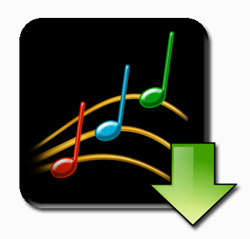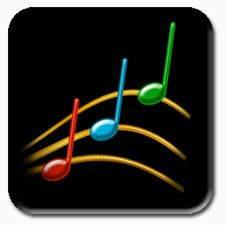Most musicians can tell you the difference between ‘major’ and ‘minor’ chords.
But ‘augmented’? ‘Diminished’? Different inversions, and chord progressions…?
Then it gets trickier!
This new downloadable training pack will introduce you to recognising chords by ear, starting with the four most important types of chord:
How does it work?
The downloadable pack includes 4 MP3 files, each of which is about 3 minutes long. Each focuses on a different type of chord. You’ll hear the chord, then its name, and then each note of the chord played in turn before the chord is repeated. Check out these preview tracks:
Just download the tracks and put them on your music player (computer or MP3 player). Then try to listen to them regularly. The more you practise the more improvement you’ll see! These tracks are designed to be easy to fit into your daily life, whenever you have a moment to spare.
 |
Download Intro Pack (8MB zip) (Right-click and ‘save as’) |
About this pack
We recently released a pack of interval training MP3s, and had some great feedback about them from students. The idea was to take the kind of easy and effective training which our iOS ear training apps provide, but put them in a form which anybody can use, any time.
Our Chordelia chord tutoring apps have two modes: Training and Testing. In Training Mode you can choose a lesson or a custom set of chord types, and then listen to examples of those chords (on piano, guitar, violin, French horn or clarinet) with each one named out loud after it plays. By listening you gradually build up an appreciation of the sounds of the chords and how they differ from each other. Then Testing Mode lets you check if you can reliably recognise them.
Although this kind of interactive learning is the most effective, you can make great progress with Training Mode alone. We’ve adapted that idea to produce this set of downloadable tracks. These will teach you 4 chord types: Major, Minor, Diminished and Augmented triads, in their ‘root’ position. This is the same as the ‘easy’ difficulty in our Chordelia: Triad Tutor app and a great starting point for developing your chord recognition.
Listen Actively
First of all, listen to each track with your full attention. Try to listen actively, exploring the sounds with your mind. Active listening is an important aural skill in its own right! Here it will help you pick apart the sounds of the chords:
When the notes are played one-by-one, listen carefully, and then try to hear them in context when the chord is repeated. Over time you’ll find that you can hear each note in the chord – even when it’s played for the first time!
It’s also important to pay attention so that when the label for each chord is spoken, you begin to associate the sound of the chord with its name.
Listen Casually
You can also pick up chord recognition in a more casual way. By hearing the chord tracks regularly, along with the spoken labels, your brain will internalise the connection between the sound and the name. This is best used once you have a basic appreciation of the chord types from actively listening.
What’s Next?
You can learn much more about chords and how to develop your aural skills for hearing chords here on our website at EasyEarTraining.com/topic/Chords. You might also like to check out our ear training apps, including two which focus on this kind of chord learning.
There are also lots of additional training packs we could produce, including:
- More types of chord (e.g. seventh chords)
- Different inversions
- Different instruments (e.g. guitar, violin, woodwind, brass)
- Test tracks, which mix up the chord types, giving you a chance to guess each one
We want to hear from you!
Like with our intervals pack, we want to know: are these tracks useful to you? What other packs would you most like to see?
Let us know by emailing: [email protected], or leave a comment below:







